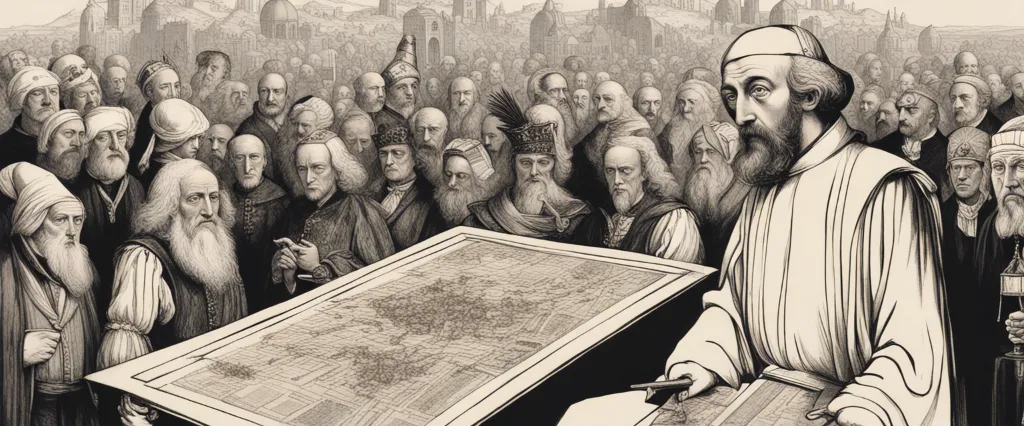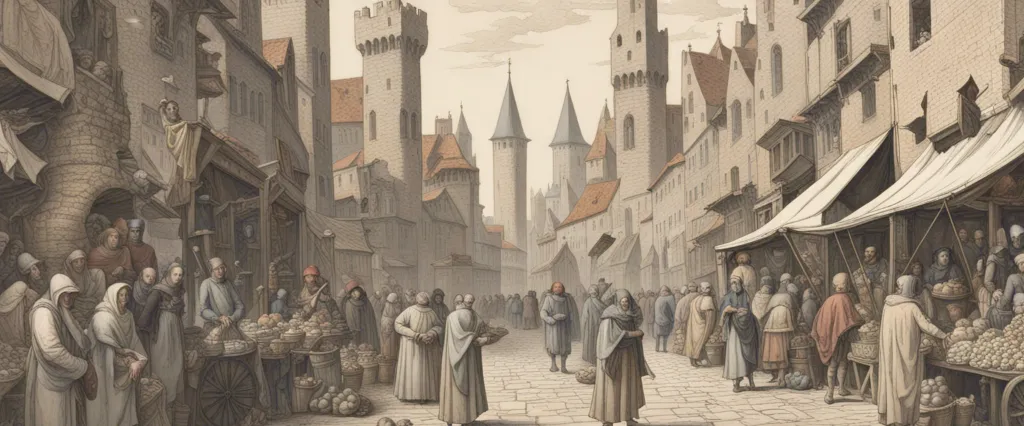
In the vast realm of historical literature, countless books have attempted to unravel the intricacies of the past. Two such works that have captivated readers with their distinctive perspectives are “1453” by Roger Crowley and “A Little History of the World” by E.H. Gombrich. While these books may differ in their scope and narrative style, they both shed light on key moments in human history. 1453″ delves into the captivating story of Constantinople’s fall, while “A Little History of the World” presents a sweeping overview of the entirety of human civilization. Through a comparative analysis of these two books, we aim to explore the contrasting methodologies employed by Crowley and Gombrich, and by extension, delve into the different ways in which they engage their readers with historical storytelling.
Brief Summary of Two Books
1453 by Roger Crowley
“1453” by Roger Crowley is a historical non-fiction book that narrates the final siege and fall of Constantinople, the capital of the Byzantine Empire, to the Ottoman forces led by Sultan Mehmed II. The book provides a comprehensive account of the events leading up to the siege, the tactics deployed by both sides, and the ultimate triumph of the Ottomans.
Crowley begins by setting the stage, describing the historical importance of Constantinople as a bridge between Europe and Asia, its strategic location, and the power struggles between the declining Byzantine Empire and the rising Ottoman Empire. He delves into the political intrigues, military strategies, and the personalities of key figures such as Emperor Constantine XI and Mehmed II, providing an in-depth analysis of their motivations and ambitions.
The narrative follows the two-year preparation by the Ottomans, with a particular focus on Mehmed II’s meticulous planning and efforts to build a massive army, construct powerful artillery, and formulate a multi-pronged assault on Constantinople. On the other hand, the Byzantines face challenges due to political infighting, financial constraints, and a lack of support from Europe.
As the siege commences, Crowley vividly recounts the intense fighting, the devastating impact of the Ottomans’ superior firepower, and the desperate defense of the Byzantines. He explores the evolving strategies employed by both sides, including naval blockades and countermeasures, as well as the heroic efforts of individual soldiers and leaders on both sides.
Ultimately, Crowley describes the fateful day of May 29, 1453 when the Ottoman forces breached the city walls, leading to a swift and brutal defeat for the Byzantines. He concludes with an examination of the aftermath of the siege, the transformation of Constantinople into Istanbul, and the long-lasting ramifications of this pivotal event in world history.
Overall, “1453” provides a captivating and detailed account of the siege of Constantinople, shedding light on the political, military, and cultural dynamics of the time. Crowley’s meticulous research and engaging storytelling make the book a valuable resource for anyone interested in the history of the Byzantine Empire, the Ottoman Empire, and the clash of East and West.
A Little History of the World by E.H. Gombrich
“A Little History of the World” by E.H. Gombrich is a concise and accessible overview of human history, written in a storytelling format. In this book, Gombrich aims to provide a broad understanding of the major events, ideas, and civilizations that have shaped our world.
The book begins with the Big Bang and continues through the rise and fall of ancient civilizations like Egypt, Greece, and Rome. Gombrich discusses the origins of religion, the development of writing and art, and the great empires and influential figures throughout history, such as Alexander the Great and Julius Caesar.
Moving into the Middle Ages, the book explores topics like feudalism, the rise of Christianity, and the important cultural shifts during the Renaissance. Gombrich also delves into the Age of Exploration and the scientific revolution, highlighting the major discoveries of the time.
The book follows the progression of European history, including the French Revolution and the rise of industrialization. Gombrich examines the impacts of imperialism and colonialism, the World Wars, and the subsequent rise and fall of communism.
Despite its brevity, “A Little History of the World” manages to cover an impressive range of historical events and ideas. Gombrich’s narrative style makes complex topics accessible to readers of all ages, presenting history as an engaging story rather than a dry textbook.
Overall, this book offers a concise and engaging overview of the history of the world, making it a great introduction for readers seeking a general understanding of human civilization.
Comparison between Two Books

Similarities in World History
Both “1453” by Roger Crowley and “A Little History of the World” by E.H. Gombrich provide an overview of world history, although they approach the subject matter from different angles. Here are some similarities between the two books:
1. Scope: Both books cover a wide range of historical events and periods. “1453” primarily focuses on the fall of Constantinople and its consequences, while “A Little History of the World” provides a broader narrative that spans from prehistoric times to the 20th century.
2. Chronological approach: Both books adopt a chronological structure, presenting historical events in the order they occurred. This allows readers to understand the progression of civilizations and the interconnectedness of different periods.
3. Exploration of significant moments: Both authors highlight key historical moments that had a lasting impact on the world. “1453” delves into the fall of Byzantium and the rise of the Ottoman Empire, emphasizing how it shaped the geopolitical landscape. Similarly, “A Little History of the World” explores pivotal events such as the emergence of ancient civilizations, the development of religions, and major global conflicts.
4. Incorporation of primary sources: Both books make use of primary sources, such as historical texts, diaries, and letters, to provide a more authentic and vivid portrayal of past events. By referencing firsthand accounts, the authors aim to enhance readers’ understanding of the time periods and the experiences of the individuals who lived through them.
5. Emphasis on the impact of individuals: While providing a broader historical context, both books also highlight the crucial roles played by individuals in shaping world history. 1453″ gives attention to key figures such as Sultan Mehmed II and Emperor Constantine XI, while “A Little History of the World” features notable figures ranging from Cleopatra to Albert Einstein.
6. Consideration of cultural and social aspects: Both authors go beyond political and military events, exploring the cultural and social dynamics of their respective time periods. They examine the arts, religious beliefs, daily life, and the intellectual achievements of various civilizations, providing a more comprehensive understanding of world history.
Overall, both “1453” and “A Little History of the World” share a common goal of presenting a holistic view of world history, albeit in different contexts and scopes.
Divergences in World History
1453 by Roger Crowley and A Little History of the World by E.H. Gombrich are both historical books that aim to provide an overview of world history. However, there are significant divergences in their approaches, focuses, and content.
One main difference between these books can be seen in their scope and timeline. 1453, as the title suggests, centers on the year 1453 and focuses primarily on the events leading up to and the aftermath of the fall of Constantinople. It zooms in on the struggles between the Byzantine Empire and the Ottoman Empire, offering a detailed analysis of the siege and conquest. In contrast, A Little History of the World takes a more broad and expansive approach, covering the entire arc of human history from prehistoric times to the present day. Gombrich aims to condense the vast span of world history into a concise and accessible narrative.
Another divergence lies in the perspective of these books. Crowley’s 1453 predominantly adopts a traditional historical approach, relying on meticulous research, primary sources, and a detailed examination of the political, military, and cultural events surrounding the fall of Constantinople. The focus is on geopolitics, leaders, warfare, and the struggle for power. Gombrich’s A Little History of the World, on the other hand, takes a more humanistic and narrative-driven approach. It emphasizes the stories, anecdotes, and social aspects of history, aiming to engage younger readers. Gombrich often relates historical events to the broader cultural and social context, depicting the daily lives and experiences of ordinary people.
Additionally, the way in which these books address historical themes differs. Crowley’s 1453 primarily explores the geopolitics, conflicts, and power dynamics between empires and rulers. It delves into military strategies, diplomatic maneuvers, and the broader ramifications of the fall of Constantinople. In contrast, Gombrich’s A Little History of the World uses a more thematic approach, discussing broader topics such as art, religion, science, and philosophy throughout history. Gombrich aims to convey the interconnectedness of various disciplines and the evolution of human knowledge and creativity over time.
In summary, while both 1453 by Roger Crowley and A Little History of the World by E.H. Gombrich aim to provide a comprehensive overview of world history, they differ in terms of scope, perspective, and thematic emphasis. 1453 focuses on a specific event in history and adopts a traditional historical approach, while A Little History of the World takes a broader scope, employs a more narrative-driven style, and delves into various themes throughout human history.

Conclusion
It ultimately depends on your personal interests and preferences. Both books offer valuable historical insights, but they vary in their focus and style.
“1453” by Roger Crowley provides an in-depth exploration of the fall of Constantinople to the Ottoman Empire in 1453. If you are interested in medieval history, the Byzantine Empire, or the clash of cultures, this book would be a fascinating choice. Crowley’s writing style is detailed and immersive, making it a suitable choice for those who enjoy in-depth narratives.
On the other hand, “A Little History of the World” by E.H. Gombrich offers a more general overview of world history. It provides a concise yet comprehensive exploration of various civilizations, events, and ideas across different time periods. Gombrich’s book is written in a more accessible and engaging style, making it suitable for a wider range of readers, including younger audiences.
If your interest lies in delving deeply into a specific historical event with a detailed analysis, “1453” would be a more appropriate choice. However, if you prefer a broader overview of world history written in an accessible style, “A Little History of the World” might be a better option.

